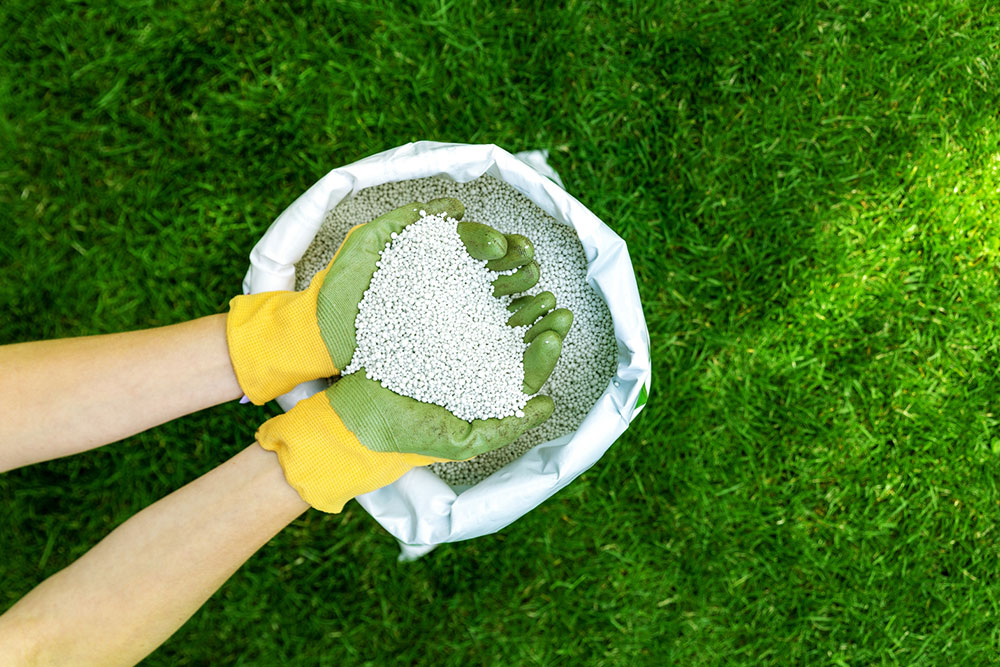Best Crepe Myrtle Fertilizers and the Application Process
Crepe myrtle trees bear brilliant, colorful blossoms when they grow in nutrient-rich soil. If the minerals in the soil get depleted, fertilizers can be used to replenish the nutrients. These fertilizers supply essential minerals such as potassium, phosphate, and nitrogen to promote growth and flowering. Additionally, regular fertilization can help enhance pest resistance. The right balance of nutrients must be provided for crepe myrtles to attain their full potential growth.
Best fertilizers for crepe myrtle trees
Using the right crepe myrtle fertilizer is crucial for the optimal growth and vibrant blooming of the trees. Let’s look at some of the options that can accelerate the growth process.

- Fertilizers with a balanced quantity of NPK
A balanced fertilizer is one that contains nitrogen (N), phosphorus (P), and potassium (K) in equal quantities. It is typically formulated with these essential minerals in a 10-10-10 or 14-14-14 blend. This equation promotes the general growth, flowering, and root development in plants. This proves to be the best fertilizer for crepe myrtle, especially saplings or recently planted ones. Balanced fertilizers provide all the essential nutrients to support plant growth at all stages. - Fertilizers rich in nitrogen content
Nitrogen is a crucial element required for the healthy development of crepe myrtle leaves. It thus promotes the formation of lush foliage, resulting in a fuller canopy.
To ensure that the plant grows healthy roots and produces beautiful flowers, it is important to provide it with sufficient amounts of phosphorus (P). A fertilizer with NPK in the amount of 5-10-5 or 10-20-10 is ideal for this purpose. This formula should be sprayed during early spring to help promote bud formation in crepe myrtle. As a result, the plant will produce abundant colorful flowers, creating an aesthetic view.
As the name suggests, controlled or slow-release fertilizers gradually release the essential minerals into the soil over an extended period, ensuring a consistent supply of nutrients to the tree. This method prevents over-fertilization and minimizes the frequency of additional treatments. Slow-release fertilizers are available in granular or spike forms.
Organic fertilizers are another type of fertilizer that is made from natural substances like compost, manure, bone meal, and other organic matter. These are the best fertilizers for crepe myrtle trees if you are looking for natural growth supplements. In addition, they are also eco-friendly. Organic fertilizers are used to improve soil composition and increase microbial activity and nutrient availability. It is advisable to apply organic fertilizers in the fall or early spring for optimal results.
How to apply crepe myrtle fertilizer?
It is important to follow the instructions provided on the packaging when using fertilizers. These instructions include details such as the recommended amount, application rates, timing, and related points. One should regularly observe the tree’s growth, check soil conditions, and assess the plant’s response to fertilizers. This will help modify one’s plant care strategy if necessary. The most common method for fertilizer application is detailed below:
- Application timing
The best time to spray fertilizer on crepe myrtle is during early spring, when they enter the growth cycle, breaking dormancy. By applying fertilizers during this time, one can provide the much-needed nutrients to support new growth and flowering. Additionally, it is recommended to apply a second round of fertilization in late spring or early summer. This is to maintain crepe myrtle’s nutritional needs throughout its growth stage. - Soil testing
Before applying any fertilizer, it is important to conduct a soil examination to determine the nutritional level of the soil. Based on the results, fertilizers can be selected with the necessary mineral content to replenish any deficiencies. It is necessary to tailor the fertilizer application to address any imbalances in nitrogen, phosphorus, and potassium levels. - Application frequency
It is important to adhere to the instructions mentioned on the packaging with regard to how often one should apply it. Over-fertilization can lead to excessive vegetative growth, nutrient runoff, or damage to the tree. The amount of the fertilizer or the frequency of application depends on the size and age of the plant. - Even distribution
When applying the fertilizer, it is important to evenly distribute it around the drip line of the crepe myrtle, which is where the outermost branches extend. The nutrients are absorbed through the active root zone, so it is important to avoid concentrating the fertilizer near the trunk. Even distribution of the fertilizer promotes uniform growth and flowering. - Watering practices
After adding fertilizer to the soil, it is important to water the plant so that the nutrients get activated and absorbed by the root. It is also crucial to monitor soil moisture levels and adjust watering frequency accordingly, as watering facilitates the movement of nutrients through the soil. - Mulching
It is recommended to add a layer of organic mulch, such as wood chips or bark, around the base of the crepe myrtle. Over time, this organic matter breaks down and releases nutrients into the soil, enhancing soil fertility and promoting plant growth. Mulching also helps conserve soil moisture, suppress weed growth, and improve soil composition. - Pruning practices
Pruning involves removing dead or diseased branches and stimulating new growth. It helps in shaping the tree and promoting a more open canopy that allows sunlight to penetrate through the branches. It is recommended to prune the tree in late winter or early spring before new growth emerges. This allows the tree to allocate energy efficiently and improves the effectiveness of fertilization.
Using the best fertilizers and following good fertilization practices can ensure proper care and nutrition for the crepe myrtle trees. This helps promote robust growth, abundant blossoms, and overall vitality. Regular monitoring and adjustment of the fertilization routine based on the tree’s response will contribute to the long-term growth and beauty of the crepe myrtle landscape.

